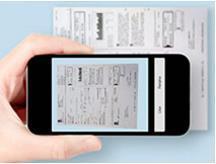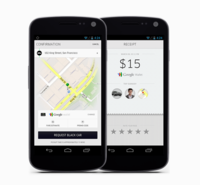November 2015 | Blog
The Future of Payments – Part 1
It all started over a 100,000 years ago with barter, exchanging five apples for three oranges, ten carrots for a loaf of bread. Later on, around 650 BC, silver and gold coins were introduced as a payment method. Then came the bank notes – initially made out of leather and used as a promise to the beholder to get the equivalent in coins. It wasn’t till the 17th century when bank notes were introduced in their present state. It was only some 70 years ago that the payment cards got in use and have established an ongoing trend towards displacing cash as a payment method.
Nowadays, global investments in fintech are rising exponentially, from $ 4 billion in 2013 to over $12 billion in 2014, with a significant share of these funds going to developing new, better ways to pay. Such numbers bring up the question of what can we expect from the future of payments.
Going cashless. The last 50 years have seen a consistent trend towards displacing cash as a payment method towards cards. Money transfer is increasingly being done through digital portals as the majority of payments are facilitated online by credit cards or intermediaries, such as Paypal which alone processes around
$315.3 million
in payments daily.
|
| This trend of removing cash from the payment interface is further amplified by the increasing number of innovative alternatives to credit cards. By leveraging mobile technology and Near-Field Communication (NFC) chips we are able to make easy payments through mobile wallets like Apple Pay, Samsung Pay and Android Pay. Kofax Mobile Bill Pay™ is another example of utilization of mobile technology, which enables customers to make an easy bill payment by snapping a picture of their receipt. |
| As the average consumer is becoming savvier in terms technology, this revolution in the digital payment industry is transforming the way in which customer make payments. Such alternatives will allow customers to seamlessly link and manage their bank accounts, thus, simplifying the entire payment process. This not only improves customer service and satisfaction, but more importantly, it closely ties users to the bank’s mobile and online banking platforms, which has proven to significantly reduce the likelihood of a customer switching banks. |
|
|
|
| No-brainers.Mobile shopping apps like Uber, iBeacon and Amazon have created a more effortless customer experience by integrating billing in the interaction process. The upcoming trend is towards facilitating the payment itself in the background, so the customer shouldn’t even need to think about it. As transactions become virtual and automated, the payment process will become more invisible to the customer. |
Engagement.With the rising adoption of mobile payments, we see a rise in the importance of the transaction itself as a customer interaction point. Moreover, the more payments are digitally processed the more data will be accumulated about the customers that would improve the understanding of their needs and preferences. It is just a matter of time that a freemium bank will emerge, leveraging its valuable customer data and insights, obtained from a rich interface on all the money moments.
Further, we see a forthcoming trend in moving the focus from the payment itself towards improving the relationship between the retailer and customer, creating a more personalized experience and enhancing the customer acquisition rate. As banks have a hard time selling transaction fees to their customers, an improved customer experience has quickly become the new standard. Banks are forced into monetizing their business through other means and channels. It is time that banks leave their anno 1600 business model behind, start acting as modern entrepreneurial companies and come up with a customer oriented proposition.
Final note
This leaves room for enhancing the total process of signing up for a payment account as well. Customers will want to experience an Uber-like onboarding process. Think about that, how would you be able to ease the process of getting a new client? How can you use the latest technology such as mobile bill pay, mobile image capture or data capture from forms on your website, Facebook or Twitter site? Or intelligent scanning and data capture for large volumes of applications which still require paperwork? In the end, these are all a part of the future of payments. For more information, please contact Jennifer.vanlent@spigraph.com
To learn more about Kofax Mobile Bill Pay™, ibml banking solutions and other Spigraph solutions, we invite you to join the upcoming webinar:
Please register here https://attendee.gotowebinar.com/register/8077570240646080770 or email Jennifer.vanlent@spigraph.com
|
| About the Author: Jaspar Roos, Chief Inspiration Officer, XL family and Founding Partner, Ventur.es Jaspar Roos is a renowned authority in the field of innovation and was Chief Inspiration Officer for ABN AMRO Bank for many years. Managing the innovation and venturing lab Dialogues Incubator, Roos has been one of the pioneers in themes such as wearable technology and crowdfunding. He is also an expert innovation member of the OISP group for the European Commission. He is partner at XL family, an international incubator and accelerator. |












